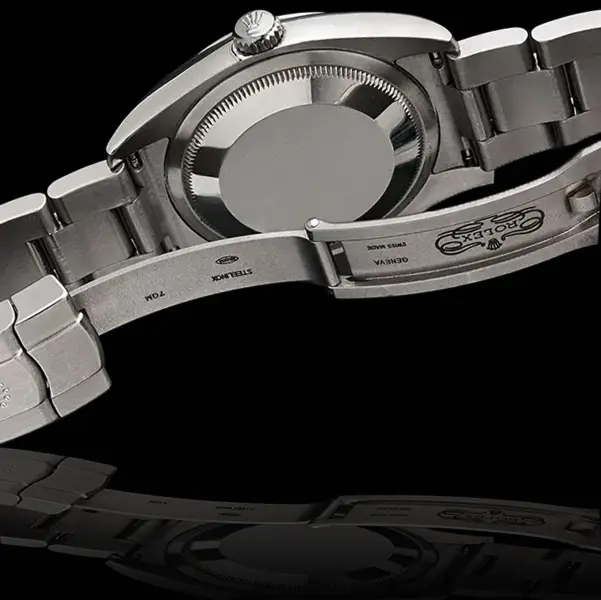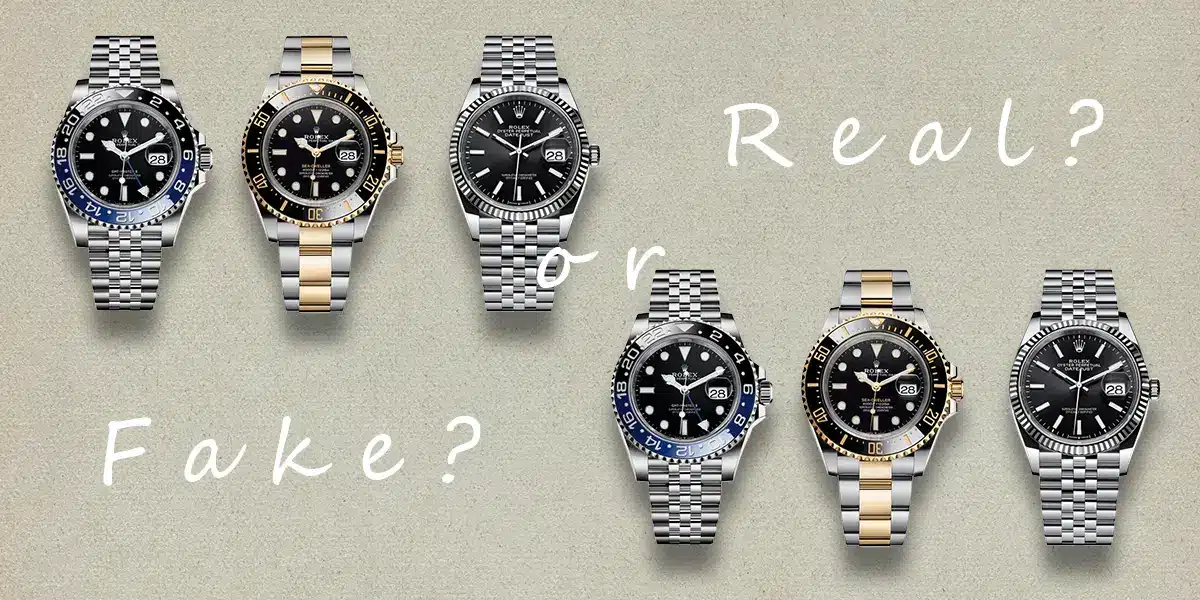Blog
How to Tell the Difference Between Real and Fake Rolex Watches
Fake Rolex: How to Differentiate Between Real and Fake Watches
Rolex watches are renowned for their precision, craftsmanship, and luxury. Unfortunately, their high value also makes them a prime target for counterfeiters. Differentiating between a genuine Rolex and a fake can be challenging, especially as counterfeiters become more sophisticated. This guide will help you identify key differences between real and fake Rolex watches, ensuring you make an informed purchase.
1. Examine the Weight
Genuine Rolex: Authentic Rolex watches are made from high-quality, dense materials, giving them a noticeable heft. The weight distribution is balanced and feels substantial on the wrist.
Fake Rolex: Counterfeit watches often use cheaper, lighter materials, making them feel less substantial. If a Rolex feels unusually light, it’s likely a fake.
2. Inspect the Movement
Genuine Rolex: The movement of a Rolex is a marvel of engineering. The second hand should sweep smoothly around the dial with a consistent motion. Rolex movements are virtually silent.
Fake Rolex: Many fakes use quartz movements, causing the second hand to tick, not sweep. Even higher-quality fakes with automatic movements often lack the fluidity of a real Rolex.
3. Check the Cyclops Lens
Genuine Rolex: Rolex watches with a date function feature a Cyclops lens over the date, magnifying it by 2.5 times for easy reading. The magnification is clear and centered.
Fake Rolex: The magnification on counterfeit watches is often weaker or completely absent. The date may appear smaller or off-center under the lens.
4. Look at the Engravings
Genuine Rolex: Rolex engravings are precise and clean. The crown logo at the 12 o’clock position and any text should be sharp and detailed. The serial and model numbers are deeply etched between the lugs.
Fake Rolex: Counterfeit watches often have poor-quality engravings that may appear shallow, fuzzy, or uneven. The serial and model numbers can be lightly etched or incorrectly formatted.
5. Observe the Crystal
Genuine Rolex: Authentic Rolex watches use scratch-resistant sapphire crystal, which is clear and durable. Modern models have a tiny laser-etched crown at the 6 o’clock position on the crystal, visible under magnification.
Fake Rolex: Fakes may use lower-quality mineral glass that scratches easily. The laser-etched crown is often missing or poorly executed on counterfeit models.
6. Examine the Bracelet and Clasp
Genuine Rolex: The bracelet and clasp of a Rolex are solid and meticulously crafted. The links are smooth, and the clasp has a crisp, satisfying click when closed. The Rolex logo on the clasp should be well-defined.

Fake Rolex: Counterfeit bracelets often feel flimsy and may rattle. The clasp might feel loose or insecure, and the Rolex logo can be poorly defined or missing.
7. Check the Serial and Model Numbers
Genuine Rolex: Each Rolex watch has a unique serial and model number deeply engraved between the lugs. These numbers should match the paperwork and database records.
Fake Rolex: Counterfeit watches may have incorrect or poorly engraved serial and model numbers. They might not match any official records.
8. Observe the Dial and Hands
Genuine Rolex: The dial of a real Rolex is perfect, with even spacing and flawless detailing. The hands move smoothly without any jerkiness. The lume (luminescent material) is bright and evenly applied.
Fake Rolex: Fakes often have imperfections such as uneven spacing, misspelled words, or poor alignment. The hands may stutter or have noticeable jerky movements. The lume may be weak or uneven.
9. Listen to the Watch
Genuine Rolex: A real Rolex operates quietly due to its precise movement. You should not hear any ticking sounds from an authentic Rolex.
Fake Rolex: Many fake watches, especially those with quartz movements, will produce an audible ticking sound.
10. Seek Professional Verification
If you’re unsure about a Rolex watch’s authenticity, seek professional verification. Authorized Rolex dealers and experienced watchmakers can provide a thorough inspection and confirm whether a watch is genuine or counterfeit.
Conclusion
Purchasing a Rolex is a significant investment, and ensuring its authenticity is crucial. By carefully examining the weight, movement, Cyclops lens, engravings, crystal, bracelet, serial and model numbers, dial, and sound, you can identify key differences between real and fake Rolex watches. When in doubt, always seek professional verification to protect your investment.


